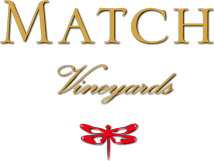According to research cited in the Canadian newspaper Globe and Mail recently, it does. Study participants were given 3-5 identical — though they didn’t know it — glasses of wine to taste and then asked to indicate which glass they thought was the best wine.
It’s commonly accepted, and supported by past research, that the attitude “first is best” is prevalent. This again proved to be the case: When subjects were given only 3 glasses, they preferred the first glass.
Heck, it could be for other reasons. I almost always think the appetizer was the best part of a meal.
I know anecdotally from pouring our two wines that approximately 3/4 of folks prefer Butterdragon over Baconbrook. This isn’t because Butterdragon is better, but it is more approachable young — and all our wines are still young — plus it has more mass appeal than the brawny mountain fruit of Baconbrook. However, in side-by-side “horizontal” tastings, if I lead off with the Baconbrook, that 3/4 preference for Butterdragon goes down. It doesn’t work out that the first poured wine is always the favorite, but the crowd-pleasing popularity advantage of Butterdragon is minimized. My experiences seem to mimic the study results.
Back to the study cited in the Globe and Mail article.
When the the number of wine samples went up, and particularly as the wine experience level of the test subjects went up, the preference started to be towards the last sample glass. Researchers had a theory about why this order preference changed:
“Wine geeks thrive on discovering new and ever-better drinking experiences, so they’re more likely to give subsequent options a chance… [T]hey will keep looking and they will give themselves even more of an opportunity for something later in the sequence to beat the current favourite.”
Here’s where my experience seems to be different than the study. When I am pouring multiple vintages of both of our wines, no matter what serving order I pour, tasters usually gravitate towards the wine that is currently drinking the best and the 3/4 Butterdragon preference holds true. One thing to also note is that tasters in this setting with me, like in the study, are usually fairly experienced in wine. Without a public tasting room, my vertical tastings are with my customers accustomed to buying $60+ bottles of Cabernet.
According to the article, “The results have an obvious implication for the wine industry.” If trying to sell an overstock or high-profit wine, serve it first. If trying to impress a sophisticated buyer, save the best for last. At your own dinner party, they also recommend saving the best for last as the first wine will shine anyway. Really? At least according to my experiences, it’s not so “obvious.” While I can see the advantages of organizing a tasting so that it builds to a crescendo, I don’t think sophisticated palates are so easily swayed. One also runs the danger of your tasters suffering from palate fatigue before they ever get to the wine you really want to shine. Just because a study using identical glasses of wine shows an order preference doesn’t mean that it will translate to real-world enjoyment of wine.
I’d like to see a bit more information about this study. The article does not say how the subjects indicated their preference. Did they try each wine and in the end just say which they liked best? Or did they write notes — and perhaps even score — the wines as they went along and use those notes and scores to determine the preferred wine? I think the results could be different.


